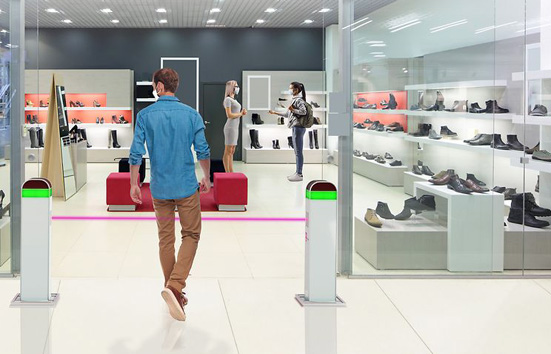Deutsche Telekom traffic lights control store entrances
- June 23, 2020
- Steve Rogerson

Deutsche Telekom has introduced a traffic-light access control lighting system to regulate entry to shops. The system counts visitors and sounds an alarm in the event of unauthorised access.
Retailers are breathing a sigh of relief as they are finally allowed to reopen their businesses and start trading again. But current hygiene rules must still be observed. Business owners must ensure that social distancing rules are being followed on their premises. A Deutsche Telekom traffic light system placed at the store entrance could control access.
“What businesses now need is reliable solutions for the new normal in times of coronavirus,” said Rami Avidan, senior vice president for IoT at Deutsche Telekom. “The access control lighting system helps them keep their customers as safe as they can be.”
The traffic light system is easy to understand. It counts every customer entering or leaving the premises. When the maximum number of visitors is reached, the traffic light turns red. If customers ignore the signal, the system sounds an alarm and an employee is notified via smartphone. As only a limited number of people is allowed to enter, it helps ensure compliance with the social distancing rules in the shop or restaurant itself, and that without owners having to hire additional staff.
The IoT product also lets businesses create transparency on the flow of visitors in their stores. As it visualises the footfall according to the time of day and day of the week, the system can be used, for example, to plan more accurately the numbers of staff needed at any point in time, or to decide when best to schedule activities such as shelf-stacking or cleaning the cold store.
Deutsche Telekom’s IoT offering consists of two pillars placed a maximum of five metres apart, to the right and left of the entrance door. They are connected to each other via a photoelectric barrier. Every time a customer enters or leaves the shop, this movement it detected by sensors, enabling the system to register the number of people who are in the shop. The traffic signal visualises the current status accordingly, and the values are sent in real time through a gateway to the cloud via the mobile network.





